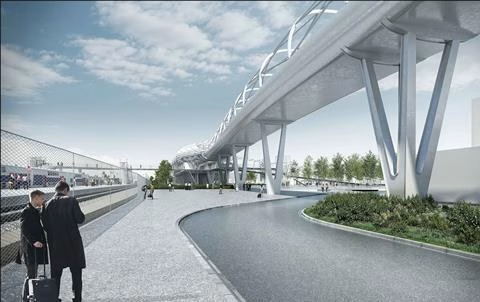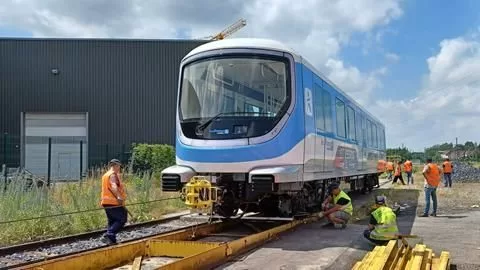The Grand Paris Express is Europe’s largest current infrastructure project, a massive expansion of the Paris rapid transit network that aims to transform the Greater Paris region. The multi-billion euro undertaking involves the creation of 200 kilometers of new, automated metro lines and 68 new stations, plus extensions to existing lines.
Furthermore, its primary goal is to better connect the suburbs of Paris to each other and to key hubs like airports, universities, and business districts, significantly reducing commute times that currently often require a transit through the city center. The project, which is scheduled to open in stages between 2024 and 2030, is anticipated to serve nearly three million passengers daily, reduce traffic congestion, and contribute to the region’s climate goals by encouraging a shift from private cars to public transport.
Similarly, in another major railway undertaking in the continent, the Rail Baltica project is also taking shape. Recently, the project has secured funding from the EU for its development. The development of major railway projects in Europe are expected to boost regional connectivity and economic integration.

Reported on September 28, 2024
The Grand Paris Express is perhaps one of the largest infrastructure projects in Europe designed with the vision of revolutionizing the Parisian peoples’ means of transport in the city and the vicinity. Upon the completion of this project, it will be possible to introduce 68 new stations and 200 kilometers new railway lines where 90 percent are under the ground. The expected date of the end of the project is 2030; however, the first phase of the project, Line 14, will be running by late 2024.
They are being built to connect Paris with its populous adjoining new town which now has a population of about 10.5 million, far over its central city population of 2.2 million. Nowadays, inhabitants of suburbs use long rides, while the new system will drastically decrease travel distance/times between major suburbs. For example, what used to take over an hour and a half to travel from Orly Airport to the Paris Saclay University Campus, will take only 15 minutes.

Read also Microsoft signs PPA’s for new US$4.3 billion France data center investment
Significance
The project also achieves a focus on architectural and environmental ingenuity on a genuinely grand scale. Modern format stations such as Villejuif-Gustave Roussy for example belongs to Dominique Perrault Architecture and are cylindrical in nature boasting high efficiency and natural ventilation, making it possible not to install additional conditioning as well as smoke extraction. There is display of natural light in the deep underground stations where the stations are covered by an optical canopies thus interconnecting the surface and the underground space.
Environmental issues have also informed the emergence of the Grand Paris Express: 70% of the soil material is being recycled, with some of it using as a building material for land art works such as the large ‘eyes’ that can be seen by passengers flying over de Charles de Gaulle airport. Reducing the percentage of conventional concrete in construction and replacing it with low CO _{2} concrete also considers the aim of France’s sustainable development.
Still, specific project supporters claim that with a new transport system one can gain more social housing near the new stations – better access to affordable homes and car-free ways of living. Paris is already on its way to its target of 25% social housing by 2025, and the areas around the lines of the Grand Paris Express are predicted to enjoy 70,000 additional homes.
Cost
The Grand Paris Express project will require an estimated € 42 billion (approximately $ 54.34 billion). Nonetheless, daily passenger volume is projected to be 2 million people, and thus it can revolutionize the transport system in Paris making the city more accessible, greener, and connected.
Nevertheless, work continues on this gigantic project with people eagerly awaiting the changes it will inexorably bring to Paris and to diminish traffic hold up thus enhancing the quality of life of the people of Paris and other persons.
Project factsheet
Architect: Dominique Perrault Architecture.
Constructor: Société du Grand Paris (SGP).
Start date: 2018.
Completion date: 2030 with significant phases operational by 2024.
Construction cost: €42 billion.
Location: The project spans the Île-de-France region.
Read also Europe’s Largest Floating Solar Power Plant Under Construction in France: Les Îlots Blandin

Leave a Reply